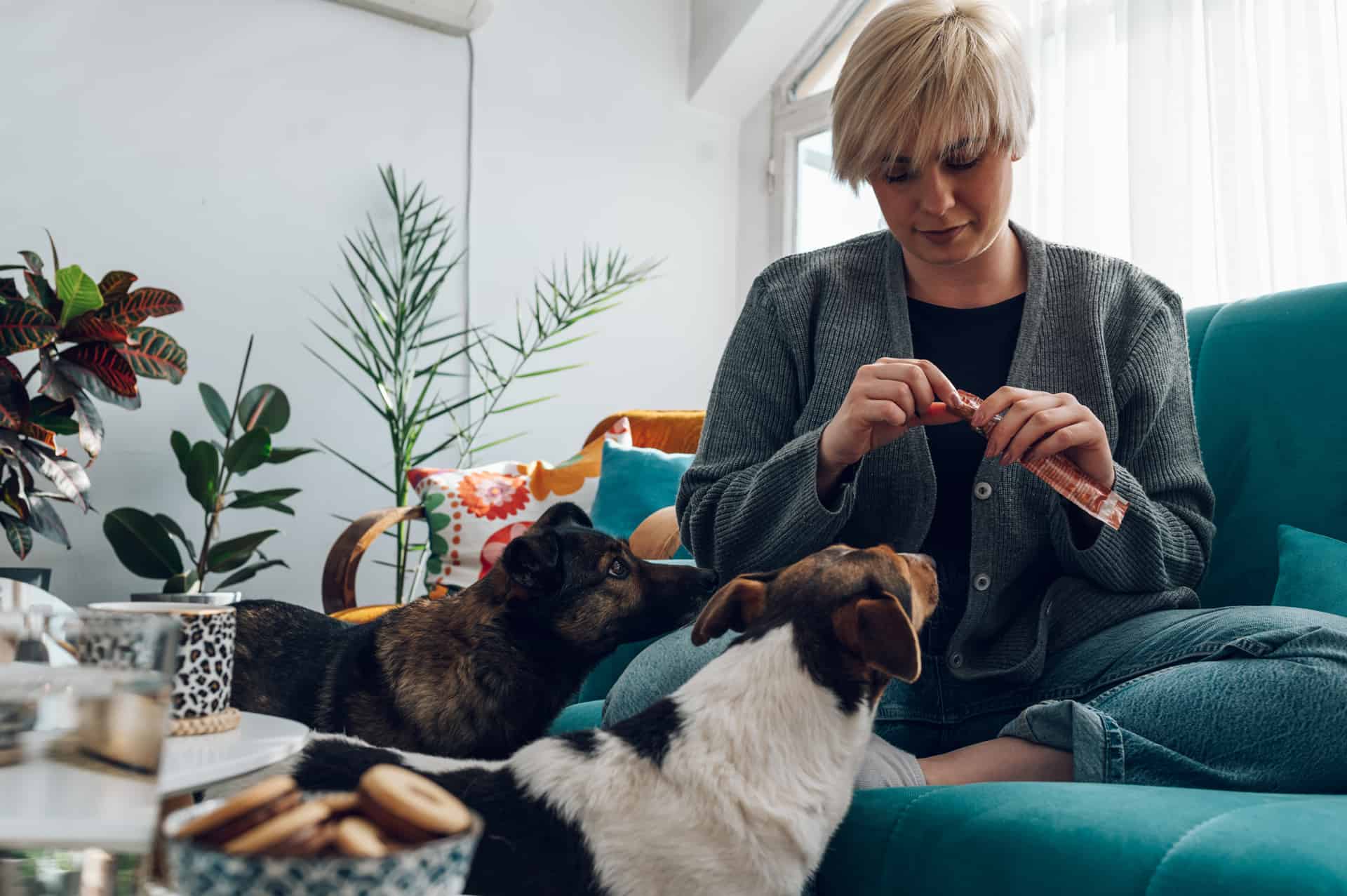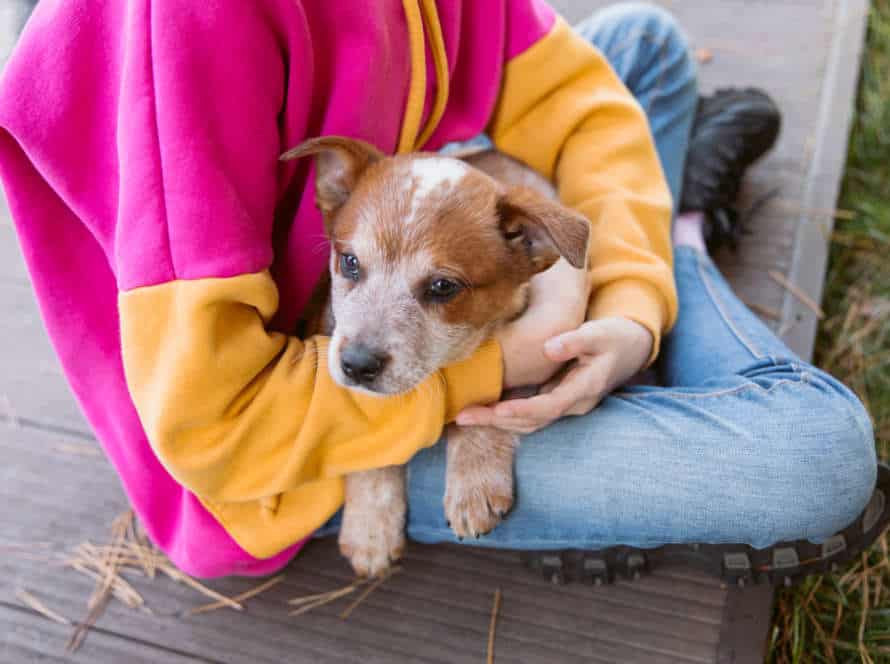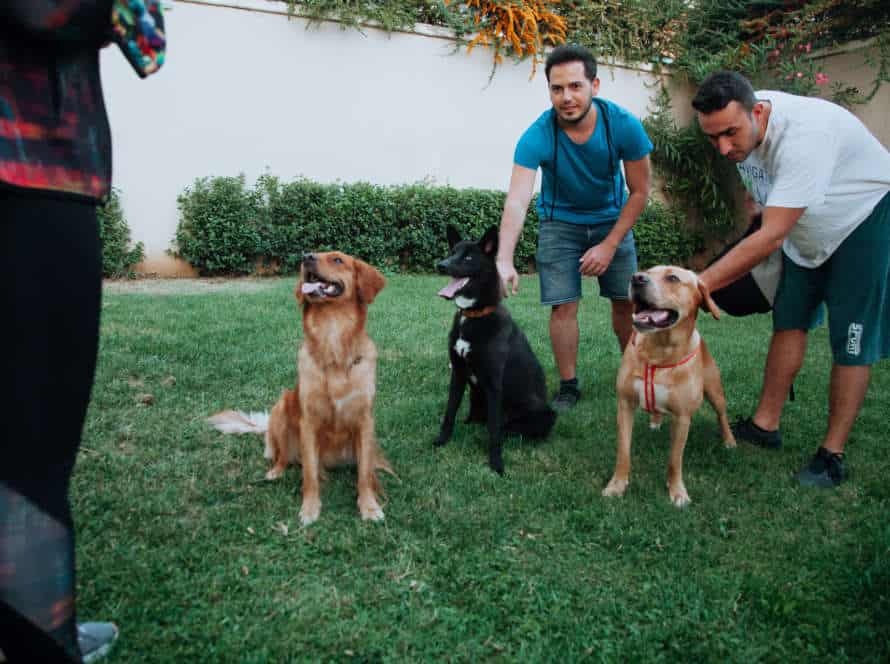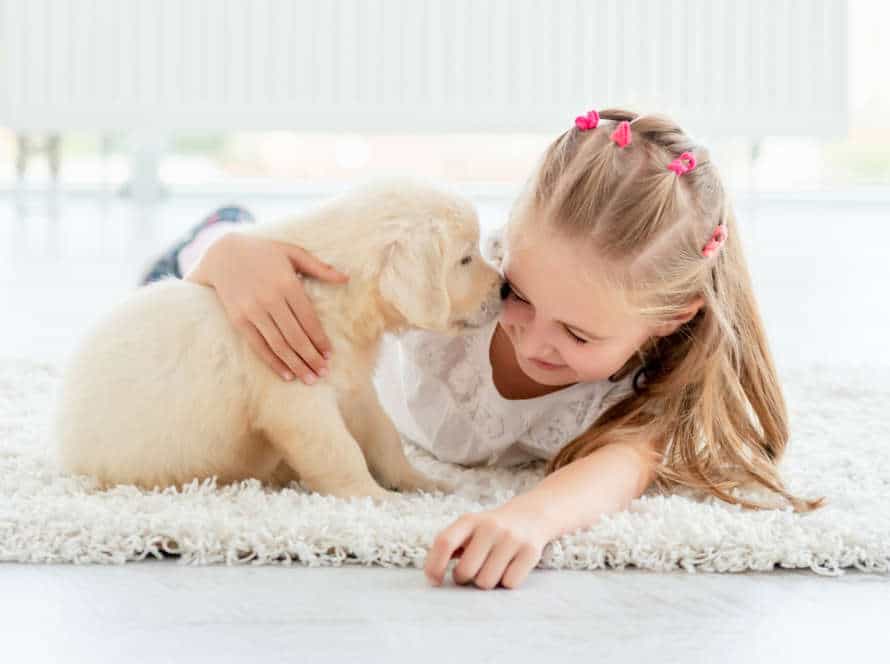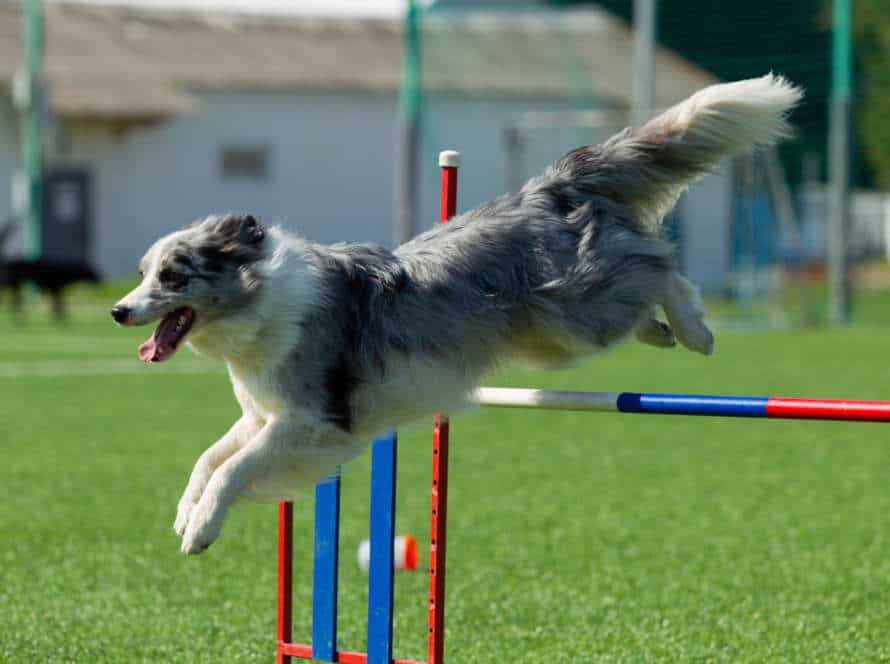Creating Harmony: Teaching Your Dogs to Coexist Peacefully
Creating harmony in your home with multiple dogs is essential. Here are some tips:
- Train them: Teach your dogs the basics like “sit,” “stay,” and “come.” Stick to the same routine for the best results.
- Introduce slowly: Let your dogs get used to each other gradually, with sniffing and exploring.
- Reward good behavior: Give treats and praise when your dogs act nicely with each other. This will encourage them to keep behaving.
- Supervise: Keep watch over your dogs when they’re together, and separate them if needed.
- Provide their own space: Each dog needs their own spot to relax and feel safe. This will help avoid tension.
Patience is key! With consistent training and positive reinforcement, you’ll have a harmonious home.
Understanding Dog Behavior
Before you can teach your dogs to coexist, it’s important to understand each one. Dogs have different personalities and triggers. To create harmony, take time to learn more about your puppy’s attitude and behavior. Here are some basics to help you better understand your pup.
Pack mentality in dogs
Pack mentality in dogs is their instinctive way of forming a social order. This can help pet owners create harmony. An alpha dog is the leader and commands respect. Other dogs have a subordinate role and understand their place. Pet owners must be the alpha and set rules. This creates order and prevents conflicts. It’s also important to give individual attention to each dog, to avoid jealousy and competition.
Natural instincts that may create conflict
Dogs possess natural instincts that can cause conflict with other dogs or animals in their vicinity. Knowing these instincts is significant for developing harmony and teaching your dogs to live together in peace.
Some typical instincts that can lead to conflict include:
- Territorial aggression – Dogs may be compelled to protect their home or belongings from other dogs or animals.
- Food aggression – Dogs may become defensive or aggressive when it comes to food, in particular if they are used to eating independently.
- Prey drive – Some dogs have a powerful prey drive that can cause them to pursue or attack small animals, such as squirrels or rabbits.
- Fear aggression – Dogs may become aggressive when they are scared or feel threatened.
By recognizing these instincts and dealing with them through training and socialization, you can promote a peaceful coexistence between your dogs and other animals in your house or neighborhood.
Importance of proper socialization
Socializing is essential for canines to create good behaviour and get along with other creatures and people. Dogs that don’t socialize at an early age can behave aggressively and be scared, which can be dangerous. Socializing involves introducing your pup to diverse folks, animals, and places in a positive and controlled way. This makes them feel secure and sure in various scenarios, diminishing the chance of bad conduct. Socialization also helps them communicate better, meaning they can interact with different dogs and people more efficiently. Pet owners must think about socialization from an early age and keep on showing their dog new things throughout their life for long-term behavioural success. All dogs are different, so socialization should be adapted to each pup’s particular needs and characteristics.
Pro Tip: Sign your dog up for a socialization class or employ a professional dog trainer to give your furry friend the socialization they need for a content and peaceful life.
Training for Good Behavior
Teaching your pooches to get along? Familial harmony depends on it! So, train them to respond to simple commands. This can avoid unwanted behaviors. Plus, it’ll make sure your pups are well-mannered when interacting with each other and people nearby.
What’re the ways to do this? Let’s take a look!
Basic obedience training
Training your pup is an important step to ensure they display good behavior and live peacefully with you and others. It provides structure, boundaries, and consistency, making for a happier and healthier pup. Here are some tips:
- Start early – puppies are easier to train than grown dogs.
- Use positive reinforcement – reward good behavior with treats or praise.
- Be consistent – use the same commands/actions each time.
- Make it fun – incorporate games/toys.
- Practice regularly – consistent and frequent training helps them remember.
By following these tips, you can have a harmonious and peaceful relationship with your pup!
Positive reinforcement techniques
Positive reinforcement techniques are a great way to teach your pup good manners. Rather than punishing them for the wrong thing, you reward them for the desired behavior. Research shows this is more effective and humane. Here’s some ways to do it:
- Treat-based training: give treats when they do what you want.
- Praise-based training: use nice words, strokes, or cuddles as reward.
- Clicker training: use a clicker with a treat or praise as reward.
If you’re patient and use these techniques consistently, your pup will learn good behavior and build a strong bond with you.
Addressing problem behaviors
Want harmony in your home? Focus on training your pup!
Start by identifying problem behaviour and its cause. Then, set boundaries and routines. Communicate consistently. Reward good behaviour and redirect bad. Positive reinforcement is effective – use treats, praise or affection. Be patient and understanding. With the right training, you’ll create a peaceful coexistence with your pup!
Building a Strong Foundation for Coexistence
Secure a solid foundation for harmonious and cooperative living between two or more dogs. It can be an enriching experience, plus beneficial for all pack members. To bring peace, provide structure, show leadership and stick to a regular routine. Here are some tips for creating harmony in your pack:
Introducing dogs to each other
Introducing dogs can be a challenge. But, there are ways to make it work. Here’s what you need to do:
- Check that your dogs are vaccinated and free of parasites.
- Take them to a neutral area, like a park or a friend’s yard.
- Walk them separately to the spot.
- Let them sniff each other in a safe distance while on a leash.
- If it goes well, let them spend time in a fenced-in area together.
- Monitor their interactions and don’t leave them alone until you’re sure they’re comfortable.
With patience and proper management, your dogs can get along! Pro tip: Get help from a professional if you’re having trouble.
Supervised interactions and gradual introductions
Interactions with supervision and introductions gradually are extremely important for building a good basis for living together and gaining harmony between your dogs. Here is what you should know:
- Start by watching all their interactions, even if one or both of them are well-mannered and educated.
- Introduce them bit by bit in managed locations, such as walks on a leash or in a place that looks the same to both of them. Make sure to reward positive behaviors and adjust negative ones where necessary.
- As they start to feel calmer around each other, you can add more time they spend together and reduce the amount of supervision.
Remember, the key to achieving a happy coexistence is patience, constancy, and positive encouragement.
Establishing clear boundaries and expectations
Establishing boundaries and expectations is key to having a strong relationship between dogs. Dogs like routine and consistency, so setting these boundaries gives them a sense of structure and safety. Here are some tips to help build clear boundaries and expectations:
- Define the limits of their space, like rooms they can’t enter and areas they must stay away from.
- Teach them basic commands, and reward them for following them.
- Set rules for meals and playtime.
- Consistently reinforce your expectations with positive reinforcement training and redirecting unwanted behaviours.
By setting clear boundaries and expectations, you can create harmony between your dogs and keep them safe and happy.
Encouraging Positive Interactions
Positive reinforcement is must for teaching your furry pals to live in harmony. To help them remain calm and develop a strong bond, promote behaviours like friendly body language, sniffing and playing together.
Here are some tips to foster positive interactions when they learn to live together peacefully:
Fun and interactive activities for dogs to enjoy together
It’s vital to promote positive interplay between pups for a peaceful home life. Here are some fun, interactive activities to help your doggies have a blast together:
- Fetch – Throw a frisbee or ball and let them take turns chasing and returning it. Great for healthy competition.
- Tug-of-war – Use rope toys or other tug toys for a playful interaction. Keep an eye out to make sure it doesn’t get too heated.
- Treasure Hunt – Hide treats or toys around the house for them to hunt together. A great way to practice teamwork.
- Agility course – Put together a course with household items. Your dogs can switch off practising their jumps and running through the course.
Remember, every dog is different, so adjust the activities to suit their individual needs.
Treating dogs equally to avoid jealousy or competition
Dogs can be jealous, competitive, and even fight, just like people! You can avoid these bad emotions by giving your pooches equal care. Here’s how:
- Spend the same time with each dog. Whether it’s cuddles, play, or training, they should have the same attention and love.
- Each pup needs its own space, bed, toys, and food bowl. This will stop them competing for stuff.
- Train them both together with positive reinforcement. This will make them work together nicely.
- Never punish one in front of the other. This can make them resentful.
By treating your doggos the same, you’ll create a harmonious home for you and your furry pals.
Rewarding good behavior and positive interactions
Dogs are social beings who put value in human and canine companionship. Reward good behavior and positive interactions to make a harmonious home. Here are some tips:
- Treats: Give them a treat for sitting quietly or playing nicely with another dog.
- Praise: Give verbal acknowledgement and physical affection when they show good behavior, like a belly rub or head pat.
- Playtime: Get them playing together, like fetch or tug-of-war.
By rewarding positive behavior, you can make a peaceful home for your furry friends and family.
Managing and Preventing Conflict
If two dogs are living together, it’s key to avoid clashes. To keep a peaceful home, owners must anticipate and stop possible harm between the dogs. They need to know their pup’s needs and character, plus be proactive in managing triggers. Here are some strategies that can help manage and stop inter-dog conflict:
Strategies to prevent fights and aggression
Dogs can be tricky! To keep them from fighting, here are a few strategies:
- Socializing with other dogs and people from an early age.
- Training your pooches to obey commands like “sit,” “stay,” and “leave it.”
- Giving each pup their own toys, food and sleeping area.
- Watching for any potential tension or aggression.
- Seeking assistance from a professional dog behaviorist, if need be.
Separating dogs when necessary
It’s important to keep dogs separate to make sure they get along. Here are some tips:
- Have rules everyone follows for both dogs.
- Keep an eye on body language, and intervene if needed.
- Feed and play with them separately.
- Give each dog their own private space.
- Slowly let them get used to each other and supervise when together.
These ideas will help create peace and harmony amongst your furry family. Pro tip: Ask a professional for extra help if things aren’t working.
Utilizing professional resources and trainers when needed
When it comes to managing and preventing dog conflicts, professional resources and trainers can be really beneficial. Here’s why:
- Trainers have knowledge of various dog types and can give specialized advice on tackling particular scenarios.
- They can show you how to modify behavior and socialize your pup properly.
- Trainers can also provide direction on introducing a new dog to the home and avoiding conflicts.
- Books, online courses and videos are also great professional resources to gain more insight into dog behavior and training.
By making use of these resources, you can comprehend your dogs better and make a harmonious atmosphere for them to live together peacefully.
Frequently Asked Questions
Q: How do I introduce a new dog to my current pet?
A: It is important to introduce the dogs slowly and carefully in a neutral territory. Use positive reinforcement and keep them separated when unsupervised until they have built a positive relationship.
Q: How can I stop my dogs from fighting?
A: Ensure that your dogs have enough space and resources, such as toys and food bowls. Train them to follow basic obedience commands and use positive reinforcement to reward good behavior. Consider consulting a professional dog trainer if the fights persist.
Q: Can dogs of different breeds live together harmoniously?
A: Yes, dogs of different breeds can coexist peacefully as long as they are introduced properly and trained to follow basic obedience commands.
Q: How do I teach my dogs to share toys and resources?
A: Use positive reinforcement to reward them when they share toys and resources without conflict. Start by supervising their interactions and intervening if necessary. Gradually increase their time together and reward good behavior.
Q: What should I do if one of my dogs is aggressive towards the other?
A: Consult with a professional dog trainer or behaviorist to identify the root cause of the aggression and develop a plan to address it. Keep the dogs separated until the issue is resolved.
Q: How can I prevent jealousy between my dogs?
A: Ensure that each dog receives equal attention and resources, such as toys and treats. Use positive reinforcement to reward good behavior and never show favoritism. Encourage them to engage in activities together.

